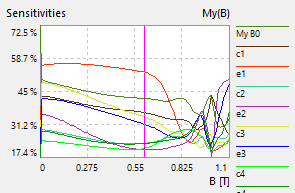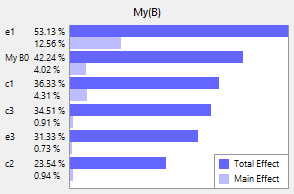Sensitivity Analysis
With sensitivity analysis, the system complexity can be reduced and the cause-and-effect relationship can be explained:
- Which model parameters contribute the most to output variability and, possible, require additional research to strengthen the knowledge base, thereby reducing output uncertainty ?
- Which parameters are insignificant and can be eliminated from the final model ?
- Which parameters interact with each other ?
Partial derivatives and correlation coefficients are defined as local sensitivity It can be used only, if the correlation between inputs and outputs is linear. If the design space is nonlinear, the global variance based sensitivity as Sobol index must be applied. It considers the influence of input variability on the output variability on the total nonlinear design space. The main effect is identified by the output variance caused by a single input. The total effect consists of the main effect and the interactions between inputs. The variance based sensitivity analysis incorporates also the input distribution. By the same model, different input distributions cause also different sensitivities. With novel algorithms, OptiY is also able to compute the global sensitivity of dynamical systems. Thus, designer has got a powerful tool to get deeper information of the dynamical systems in the early design stage without prototypes to make the right design decisions related in reliability and quality.


sensitivity of dynamical system sensitivity at a cut line (pink)
Case Studies
- Robust Design of an Actuator Assembly for high-precision Positioning under static Aspect
- Robust Design of Induction Motor
- Robust Design of a Hydraulic Cylinder Drive
- Robust Design of a Butterfly Valve
- Uncertainty Analysis of Longitudinal Vehicle Dynamics
- Failure and Lifetime Assessment of Welded Stainless Steel Structures via Finite Element Modeling and Variance Based Sensitivity Analysis Methods



